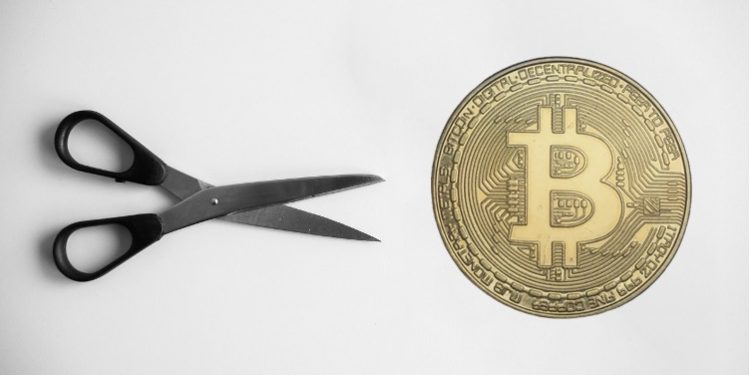2024 Bitcoin Halving – Does it Matter?
Whenever the topic of Bitcoin comes up, it always turns into a long discussion of numbers. Blocks mined, transactions speeds, gas fees, and more are all key metrics that anyone who’s plugged into the scene needs to keep track of. And whenever these come up, talk of “the halving” is usually close behind. So, what is it? How does it work? What can you expect from it? And, most importantly – does it even matter?
What is the Bitcoin Halving?
In the simplest possible terms, the Bitcoin halving reduces the reward that miners receive for validating a block of transactions by half. This, in theory, reduces the value of mining, decreases the number of new coins, and limits inflation. Sounds easy enough.
To go into a bit more depth, the halving is a mechanism embedded into Bitcoin’s most fundamental protocols with the expressed purpose of controlling the coin’s supply and inflation rate. Since the total supply is limited to 21 million coins, reducing the reward limits how quickly new coins enter circulation. The idea is similar to how central banks limit the amount of new money being printed every year. Without limiting the number of coins available, the entire market could see inflation of unprecedented levels.
To date, the halving has occurred every four years, in 2012, 2016, and 2020. More specifically, though, it occurs after every 210,000 blocks are mined. This has been an important means of combating the rapid increase in computing power that has become available to the average consumer. While it’s true that most Bitcoin mining is done in large commercial operations, the increased prevalence of high-end CPUs and dedicated mining rigs has led to an explosion in the capability of Bitcoin miners.
As the hash rate increases, so does the speed with which new coins are added to the blockchain. Without the halving, the incentive to keep mining never slows down. With the amount of power being used by crypto miners exceeding that used by entire nations, slowing this process down is smart from both a business and ecological standpoint.
Impact on Miners and Users
So, with that out of the way, what are the actual day-to-day implications for the average Bitcoin user in a post-halving ecosystem? While it’s impossible to predict the future, we can look back at the previous halvings to get a good idea of what to expect.
It’s fairly likely that the Bitcoin halving will have a significant impact on both miners and users. As mentioned, the reward being cut in half substantially reduces the profitability of mining, making it a less attractive option. In the past, this has led to a drop in the number of miners, longer confirmation times and higher transaction fees. However, these drops have generally proven to be short-lived. It seems that this decrease in supply tends to weed out only the most inefficient miners, leaving the largest players free to pick up the slack.

For users, higher transaction fees and increased transaction times are to be expected immediately following the halving due to the reduced supply of new Bitcoins. This is likely to be short-lived as the market balances itself to adapt to the new supply rate. On the other hand, the halving could also decrease Bitcoin’s volatility, making it more stable in the long run.
It’s important to consider, though, that during the last halving in 2020, the crypto market was in a period of unprecedented growth. Additionally, the previous halvings were all before Bitcoin truly exploded in value. As it stands, the exact fallout of the next halving could very well buck previous trends.
Impact on Markets
Historically, Bitcoin’s halving has rippled across the entire cryptocurrency market, leading to massive price increases. As quick history lesson, the 2012 halving saw Bitcoin’s price skyrocket from a measly $12 to more than $1000 in under a year. In 2016, the halving drove the price from around $600 to over $19,000 in just two years. In 2020, the halving led Bitcoin to its all-time high of nearly $70,000 in November 2021. Clearly, people haven’t been deterred by the reduction of rewards as the total value for them has continued to climb.
Sadly, any economic forecast is rarely so straightforward, and predictions are educated guesses at the best of times. While there are voices claiming that the halving is already priced in and any price increase are likely to be temporary, there are others who argue that this could be the largest increase ever thanks to the increased institutional adoption and interest in Bitcoin.
A sudden increase in the value of Bitcoin will almost certainly impact altcoins as well with investors shifting focus away from other cryptocurrencies back toward Bitcoin. This could lead to increased demand for Bitcoin, potentially driving up its price even further.
Expert Opinions
As with anything, getting a consensus on what the halving will actually mean is next to impossible. There are strong voices making valid arguments on both sides of the issue of what exact effects we can expect.
For example, the Efficient Market Hypothesis argues that the value of any asset accurately reflects all available information at all times. This, in theory, makes it impossible for anything to actually outperform the market. Basically, every market is a combination of different participants who are all acting in their own self-interest and possessing their own unique advantages. This collective activity creates accurate buy and sell signals, causing asset prices to settle at a “fair” market value.
Supporters of the Efficient Market Hypothesis can apply the same reasoning to Bitcoin. Their claim is that Bitcoin’s price reflects the actual market value, meaning that, yes, the halving is priced into Bitcoin’s price. How? The idea is that people have already started accumulating Bitcoin in advance of the halving, causing the price to move to where it’s “supposed” to be.
If Bitcoin is, in fact, as efficient as this theory makes it out to be, then one has to ask if it’s a worthwhile investment at all. While EMH advocates typically don’t support buying Bitcoin with the hopes that the halving would boost its price, analysts like Nic Carter argue that there are several unforeseen factors that could lead to a price increase. These factors, since they are currently unforeseen, are not priced in.
Vijay Boyapati, a well-known crypto bull, argues that the halving simply cannot be priced into Bitcoin’s value. In short, his argument rests on the idea that because Bitcoin isn’t a traditional financial asset, it doesn’t fit into the traditional framework of asset valuations. This makes “pricing in” the halving impossible:
“In finance the term “priced in” refers to whether information that affects future potential cash flow of a revenue generating asset. […] Bitcoin has no cash flows.”
He argues that because Bitcoin’s halvings disrupt the balance of supply and demand by limiting supply, consistent demand “would cause the price to rise” until a new balance is reached. Since Bitcoin is a market with a growing number of users and thanks to the “madness of crowds,” there’s no way to truly predict where that new equilibrium will be until it happens, making it impossible to price in the halving.
Crypto-Based Payment Business
The 2024 halving is almost certain to have at least some impact on any business that uses crypto for payments, including the crypto casino and iGaming sectors. It’s certainly possible that the 2024 halving leads to faster transaction times and lower fees, making it even more attractive for users to gamble with cryptocurrency. This could have the knock-on effect of leading to wider popularity of crypto casinos, driving growth in the industry.

This doesn’t come without risks, though. As the popularity of crypto casinos grows, an increased demand for Bitcoin could drive up transaction fees, making gambling with cryptocurrency less appealing as the fees could outweigh the benefits. Additionally, with increased regulatory scrutiny of Bitcoin since the last halving, the crypto casino industry could find itself a bystander in a larger legal battle.
While the exact nature of the changes to come can’t be predicted with any real certainty, the fact is the 2024 Bitcoin halving will have significant effects on the wider crypto space.








